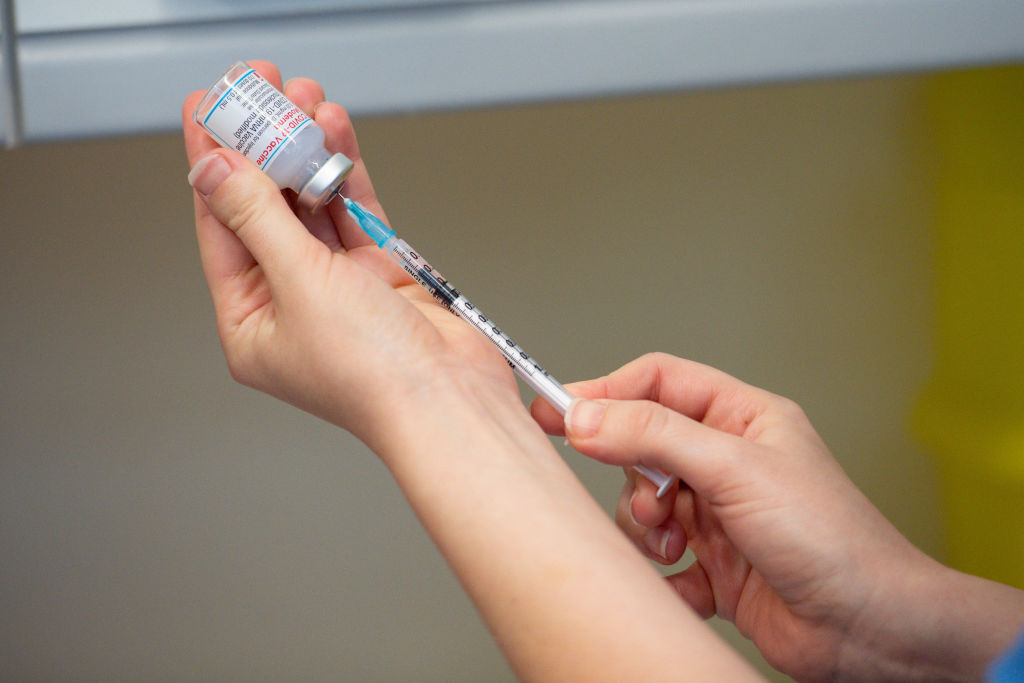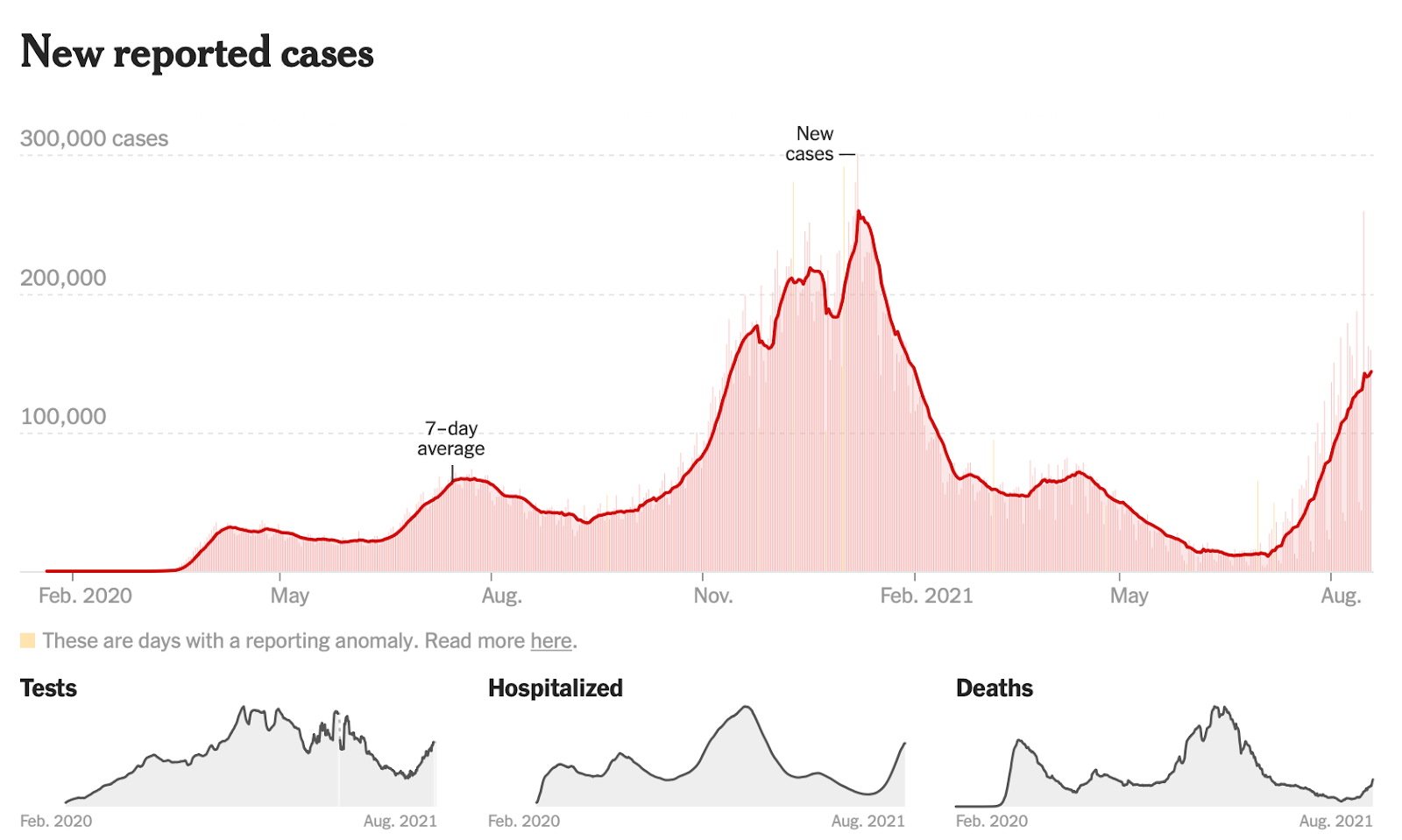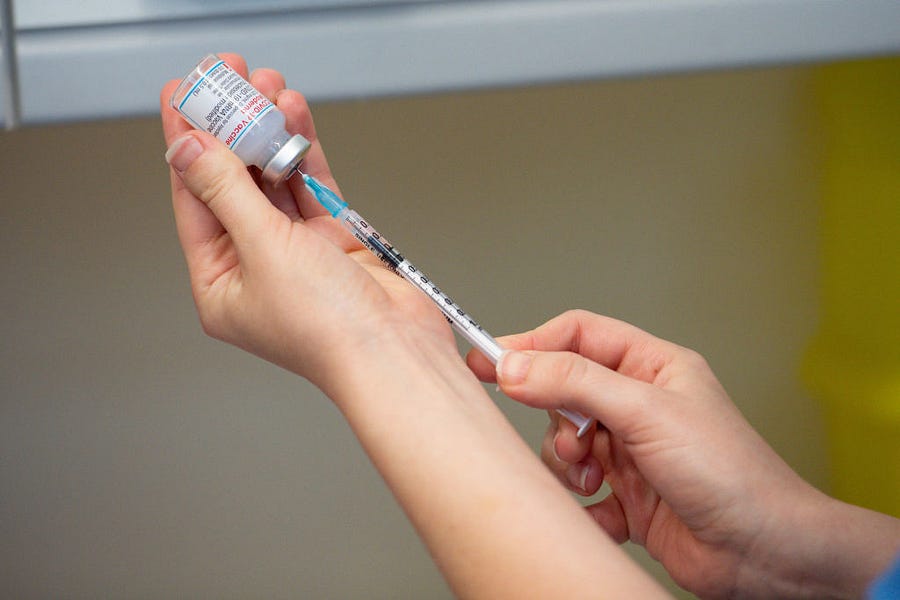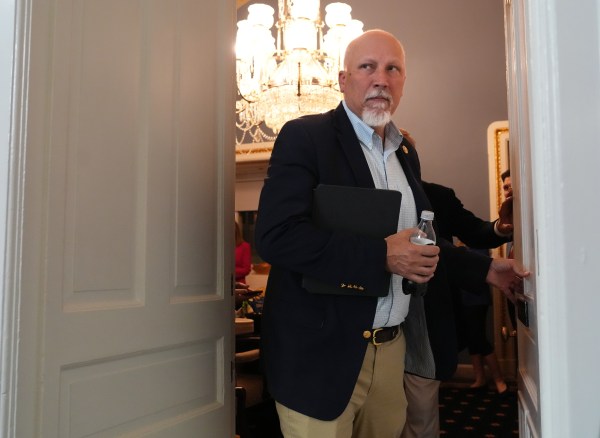Happy Friday! When all those sci-fi novels promised virtual reality in the future, we’re not sure glorified conference calls are what they had in mind.
Quick Hits: Today’s Top Stories
-
A Pentagon spokesman announced Thursday that the United States had evacuated approximately 7,000 people from Afghanistan since Saturday—including 2,000 in the previous 24 hours, well below the Biden administration’s goal of 5,000 to 9,000 evacuations per day.
-
The Department of Education announced Thursday it will wipe out more than $5.8 billion in student loan debt for approximately 323,000 borrowers deemed to have a total and permanent disability.
-
The official death toll following Sunday’s earthquake in Haiti has risen to nearly 2,200. The U.S. Geological Survey’s Prompt Assessment of Global Earthquakes for Response (PAGER) tool, however, estimates the ultimate casualty count could end up being at least five times that.
-
Treasury Secretary Janet Yellen and Labor Secretary Marty Walsh sent a letter to lawmakers on Thursday reiterating that President Biden believes it is “appropriate” for the federal $300-per-week unemployment insurance boost to expire on September 6 as planned. They added, however, that states can tap into the American Rescue Plan’s $350 billion in state and local aid to provide “a more gradual wind down of income support for unemployed workers” if they so choose.
-
The Federal Trade Commission on Thursday filed an amended antitrust lawsuit against Facebook, arguing the company “resorted to an illegal buy-or-bury scheme to maintain its dominance.” A federal judge dismissed a similar FTC lawsuit against the tech giant earlier this summer, but gave the agency a chance to revise its arguments.
-
Initial jobless claims decreased by 29,000 week-over-week to 348,000 last week, the Labor Department reported on Thursday—the lowest tally since the beginning of the pandemic.
-
Toyota announced yesterday it will cut its worldwide production by 40 percent in September due to persistent global supply chain issues, particularly regarding microchips.
-
Sen. Roger Wicker, Sen. Angus King, and Sen. John Hickenlooper each announced Thursday that they tested positive for COVID-19. All three are fully vaccinated, and experiencing only mild symptoms.
Is a Third Shot in Your Future?

While the world’s attention has been understandably focused on the situation in Afghanistan, the Delta variant has continued doing what it does best: spreading.
The sources upon which TMD had come to rely in compiling its daily COVID data have unfortunately stopped providing some of the more relevant statistics, but the New York Times’ Coronavirus in the U.S. data visualization has proven a worthy replacement.

The seven-day average for confirmed new cases has climbed to 143,792—a 44 percent increase over the past two weeks, reaching a level not seen in the United States since early February. Hospitalizations and deaths are following suit, with their rolling averages rising 53 and 108 percent over the past 14 days, respectively.
The current wave—of which, per CDC surveillance testing, the Delta variant now makes up nearly 99 percent—is absolutely pummeling the southeastern United States. The Alabama Hospital Association said there was not a single ICU bed available in the state on Wednesday, and Mississippi just opened its second emergency field hospital this week. Louisiana, Mississippi, and Florida are averaging about one daily COVID-19 death per 100,000 residents—nearly four times the national average of 0.27.
This isn’t happening in a vacuum. Alabama and Mississippi have the two lowest vaccination rates in the country, with just 36 percent of residents fully vaccinated, and Louisiana is fifth lowest at 39 percent. Mississippi Gov. Tate Reeves last week labeled the shots safe, effective, and the “best tool we have moving forward to beat the virus,” but added a few days later he will “always defend” his constituents’ right not to get them.
But whether it’s the growing number of public- or private-sector mandates, or simply fear of the Delta variant, the pace of daily vaccination is once again on the rise. One month ago, the United States was averaging 497,000 shots per day. Now, that average is up to 823,000—and more than 1 million shots were administered yesterday, for the first time since July 1. All in all, slightly more than 70 percent of the nation’s eligible people have received at least one vaccine dose, and slightly less than 60 percent are fully vaccinated.
The definition of “fully vaccinated,” however, could soon be in flux. On Wednesday—just days after the FDA and CDC approved COVID-19 booster shots for immunocompromised individuals only (because they have been demonstrated to have a uniquely poor immune response to the vaccine)—the Biden administration’s top public health officials issued a joint statement announcing their plan to begin offering third doses to all Moderna and Pfizer vaccine recipients this fall eight months removed from their second dose, pending FDA and CDC approval. (They say Johnson & Johnson recipients will likely need a booster as well, but data will not be available for a few more weeks.)
To justify the move—which is a reversal from the agencies’ position six weeks ago—the CDC released a flurry of studies showing that the immunity of the Pfizer and Moderna vaccines confer against infection wanes over time.
-
One, looking only at long-term care facilities, found that efficacy among nursing home residents fell from about 75 percent in March through May to 53 percent in June or July. The study’s authors conceded, however, that they “could not differentiate the independent impact of the Delta variant from other factors, such as potential waning of vaccine-induced immunity.”
-
Another study focused on New York state data, and determined that the overall age-adjusted vaccine effectiveness against infection fell from 92 percent at the beginning of May to 80 percent at the end of July.
What these studies also show, however, is that the Pfizer and Moderna vaccines’ protection against hospitalization remained very stable over the same time period. In the New York study, efficacy hovered between 92 and 95 percent. A third study—looking at data from 21 hospitals in 18 different states—found that “no decline in vaccine effectiveness against COVID-19 hospitalization was observed over 24 weeks.” This research is consistent with real-world CDC data, which, as of August 9, show that 5,725 of 166 million fully vaccinated Americans (approximately 0.003 percent) have been hospitalized due to COVID-19 and 1,246 of 166 million fully vaccinated Americans (0.0008 percent) have died from it.
The aforementioned joint statement—from CDC Director Dr. Rochelle Walensky, Surgeon General Dr. Vivek Murthy, and National Institute of Allergy and Infectious Diseases Director Dr. Anthony Fauci, among others—acknowledges this reality, but argues it’s better to be ahead of the curve than behind it. “The available data make very clear that protection against SARS-CoV-2 infection begins to decrease over time following the initial doses of vaccination, and in association with the dominance of the Delta variant, we are starting to see evidence of reduced protection against mild and moderate disease,” the officials write. “Based on our latest assessment, the current protection against severe disease, hospitalization, and death could diminish in the months ahead, especially among those who are at higher risk or were vaccinated during the earlier phases of the vaccination rollout.”
The plan has been met with its fair share of criticism—and not just from the World Health Organization, whose director earlier this month argued we cannot “accept countries that have already used most of the global supply of vaccines using even more of it, while the world’s most vulnerable people remain unprotected.” (President Biden brushed this criticism off in an ABC News interview earlier this week, arguing the United States will provide half a billion shots to the rest of the world by mid-2022 and is “doing more than anybody.”)
Dr. Paul Offit, director of the Vaccine Education Center at the Children’s Hospital of Philadelphia, doesn’t buy that an erosion of vaccine efficacy against severe disease and hospitalization is just around the corner. “For protection against serious disease, really all you need is immunological memory,” he told The Dispatch. “You don’t necessarily have to have high titers, the virus’ neutralizing antibodies in your circulation. Immunological memory is longer lived.”
On a micro-level, there’s not really a downside to a third dose. Clinical trials—for both Moderna and Pfizer—have demonstrated boosters to be safe, and to yield even higher amounts of neutralizing antibody titers against COVID-19 (and its variants) than a two-dose regimen. Real-world data out of Israel this week found the Pfizer booster shot to reduce the risk of infection among those 60 and older by 86 percent and the risk of severe disease by 92 percent.
“I think it will be safe, and I think—without question—it will boost immunity,” Offit said. “But my problem is do you need to do it now, or why couldn’t we wait until there was some evidence that you really needed to do it? … I just worry that it sends the wrong message out there that people aren’t protected and now will feel unprotected when they’re really not unprotected.”
The move also has the potential to further dissuade those who have thus far refused the vaccine from changing their minds, either because three shots seems like a big lift or because they perceive the vaccines to be less effective than they actually are. “That sounds to me like the moneymaking operation for Pfizer,” former President Donald Trump told Fox News earlier this week. “You wouldn’t think you would need a booster. You know, when these first came out, they were good for life.” (The vaccines were never promised to be good for life.)
This is ultimately why Offit is frustrated with the Biden administration’s strategy here. “We now are about to devote a fair amount of resources to boosting people who’ve already been vaccinated,” he said. ”I think that will have little impact on the transmissibility of this virus. … If we want to get on top of this pandemic, the issue is not giving a booster dose to the vaccinated, it’s vaccinating the unvaccinated.”
Afghanistan and the Indo-Pacific
In the months and years preceding the United States’ departure from Afghanistan, the Biden and Trump administrations reframed the coming withdrawal as a “shift” to the Indo-Pacific. At best, our commitment to the Afghan government and people was a distraction from the far more pressing goal of combating Chinese aggression. At worst, the two foreign policy goals were mutually exclusive.
These were, of course, ludicrous claims, even without the benefit of hindsight. U.S. engagement abroad isn’t a finite resource—and Afghanistan occupies a critical geographic location, bordering China and former Soviet republics. Beijing and Moscow have responded predictably amidst the fall of Kabul, and great power competition analysts now have more to worry about than they did prior to the U.S. withdrawal.
When asked about American condemnations of China’s genocide in Xinjiang yesterday, foreign ministry spokesperson Hua Chunying had this to say: “When the world is shocked and saddened by the chaos and misery at Kabul’s airport, a handful of politicians in the U.S. are turning a blind eye to the ongoing tragedy of its own making … Anyone that doesn’t shut his or her eyes can see it is the U.S. that has committed genocide and crimes against humanity and the U.S. is the biggest threat to democracy and human rights.”
She went on to call American media and personnel a “laughing stock” for fuming about the Chinese response to its withdrawal. “Instead of looking for causes from within so as to get to the root of the problems, the U.S. habitually takes every opportunity to shift blames onto others whenever it encounters problems.”
While the Chinese Communist Party (CCP) has concerns about safe haven for Islamic extremism in its own backyard, Beijing is nothing if not pragmatic. China’s foreign minister Wang Yi met with Taliban leader—and rumored Taliban-appointed president of Afghanistan—Mullah Abdul Ghani Baradar more than three weeks ago. Many speculate that the Chinese government will seek to expand its Belt and Road Initiative to Taliban-controlled Afghanistan and exploit the country’s rare earth metals.
Russia, meanwhile, has opposed a U.S. regional presence and asserted that China feels the same. A story uncovered by the Wall Street Journal yesterday found that Russian President Vladimir Putin “objected to any role for American forces in Central Asia countries” in a June 16 summit with Biden. In the absence of secure overflight and basing agreements with countries in the region, the administration’s plans to conduct “over-the-horizon” strikes and reconnaissance are severely limited.
Without bases in Uzbekistan, Tajikistan, or Kyrgyzstan, the U.S. is dependent on Pakistan, U.S. aircraft carriers in the Indian Ocean, or its Arab allies in the Middle East. The former relationship is unstable, given underlying tensions between Washington and Islamabad, and is expected to worsen if Pakistan pushes for the Taliban’s international recognition. The latter two are logistically difficult given distance and other considerations.
“The reason why the United States had to go into Afghanistan after 9/11 was because over-the-horizon monitoring didn’t work,” Husain Haqqani, who served as Pakistani ambassador to the U.S. and now works at the Hudson Institute, told The Dispatch. “You have to be in a place to have a better idea of what’s happening there. That is why, even with all of the technology that enables long distance communication, you still need people on the ground. You still need embassies, you still need spies.”
Worth Your Time
-
Princeton security researchers Jonathan Mayer and Anunay Kulshrestha built an experimental child sexual abuse detection system two years ago very similar to the one Apple is rolling out this fall—and they concluded that the technology was dangerous. “We’re not concerned because we misunderstand how Apple’s system works. The problem is, we understand exactly how it works,” they write for the Washington Post. “Our system could be easily repurposed for surveillance and censorship. The design wasn’t restricted to a specific category of content; a service could simply swap in any content-matching database, and the person using that service would be none the wiser. A foreign government could, for example, compel a service to out people sharing disfavored political speech. That’s no hypothetical: WeChat, the popular Chinese messaging app, already uses content matching to identify dissident material. India enacted rules this year that could require pre-screening content critical of government policy. Russia recently fined Google, Facebook and Twitter for not removing pro-democracy protest materials.”
-
National security columnist Josh Rogin has a stark warning for the Biden administration. “President Biden told the world that the most important struggle of the 21st century was between democracies and autocracies—and he promised that the United States would lead the fight,” Rogin writes. “Eight months into his presidency, the autocrats are the ones on the march. As democracies collapse, so do the aspirations of millions for greater dignity, agency and freedom. Afghanistan is just the latest example. … So far, autocracy has advanced in several places on Biden’s watch. In Myanmar, there was a military coup in February that the world’s democracies did little to avert or respond to. In Tunisia last month, President Kais Saied orchestrated a “self-coup,” in which he used anti-democratic means to consolidate his own power. Again, the free world shrugged.”
Presented Without Comment
Toeing the Company Line
-
In yesterday’s French Press (🔒), David pushes back against a narrative that is emerging in the wake of Afghanistan’s collapse: that the United States should have left Afghanistan in late 2001 after the military’s initial rout of the Taliban and al-Qaeda. “Surprisingly easy victories can be deceptive. The Taliban wasn’t destroyed. Al-Qaeda wasn’t destroyed. Mullah Omar was alive. Osama bin Laden was alive,” he writes. “If we left Afghanistan in early 2002, who would have returned to power? In all likelihood, the Taliban, al-Qaeda, Mullah Omar, and Osama bin Laden. The Taliban would have won. That would have been an utterly intolerable outcome to the American people. The purpose of our intervention into Afghanistan wasn’t merely punitive, it was protective.”
-
Thursday’s episode of Advisory Opinions features Sarah and David discussing the Biden administration’s proposal to tie mask mandates to civil rights law, the latest “remain in Mexico” policy developments, and what a Texas Supreme Court ruling means for Democratic lawmakers from the state trying to avoid arrest.
Let Us Know
Will you be lining up for a booster shot eight months after your second dose? Do you think the Biden administration’s move brings us closer to the end of the pandemic?
Reporting by Declan Garvey (@declanpgarvey), Andrew Egger (@EggerDC), Charlotte Lawson (@charlotteUVA), Ryan Brown (@RyanP_Brown), Harvest Prude (@HarvestPrude), and Steve Hayes (@stephenfhayes).







Please note that we at The Dispatch hold ourselves, our work, and our commenters to a higher standard than other places on the internet. We welcome comments that foster genuine debate or discussion—including comments critical of us or our work—but responses that include ad hominem attacks on fellow Dispatch members or are intended to stoke fear and anger may be moderated.
With your membership, you only have the ability to comment on The Morning Dispatch articles. Consider upgrading to join the conversation everywhere.